Water efficiency at home
How to improve water efficiency at home
There is a huge potential for consumers to adopt water efficiency practices with a direct impact on water and energy bills, maintaining and even increasing comfort, safety and water quality.
- Efficiency measures generate potential water savings of up to 45%.
- Choosing more efficient products and devices helps to reduce water consumption, with equal or better comfort.
- Selection of household appliances that use water must take into account water consumption.
In Portugal, it is estimated that household costs for housing, water, electricity and gas exceed 30% of the total monthly and annual household costs [1].
With the adoption of water efficiency measures, including the use of more efficient equipment and devices and innovative technologies, replacing conventional systems and equipment, it is possible to reduce water consumption by 30% to 45% at home and in buildings. And saving water also means saving energy, both at home and in the community, as the collection, transport and treatment of water supply and waste water are operations that imply a high consumption and energy cost.
In residential buildings, 23% of the energy bill is associated with water heating [2], with most of the water consumed by households heated using gas and electricity [3]. The heating of domestic hot water and the maintenance of water pressure, are two operations with a high energy consumption and that demonstrate the relationship between water and energy, often called Nexus Water-Energy.
Considering the energy consumption required for heating hot water, the combined savings in terms of water and energy consumption in buildings can reach the equivalent of 51% of the water bill.
How and where to implement water efficiency measures in residential buildings?

Efficient devices and products

Rehabilitation of building networks

Outdoor spaces

More efficient appliances

Intelligent management systems

Green roofs
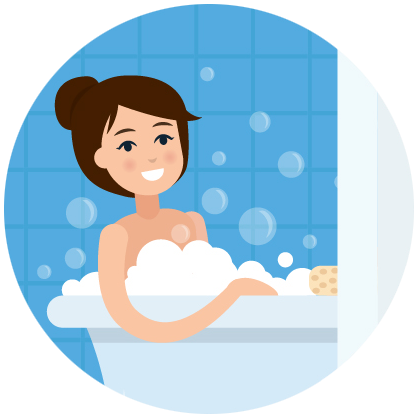
Behaviours
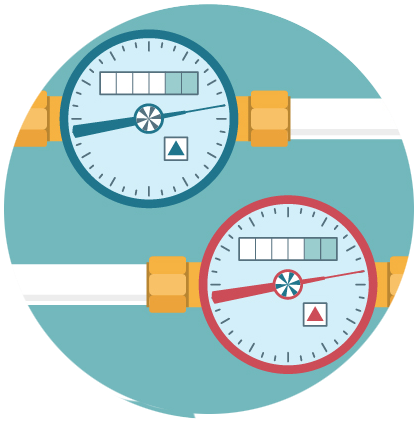
Circulation and return of domestic hot water
Choose products and devices that ensure greater efficiency and comfort in the use of water
Product labeling systems and consumption indicators help to choose the most efficient products and devices (for example showers and shower systems, kitchen and washbasin taps, cisterns).
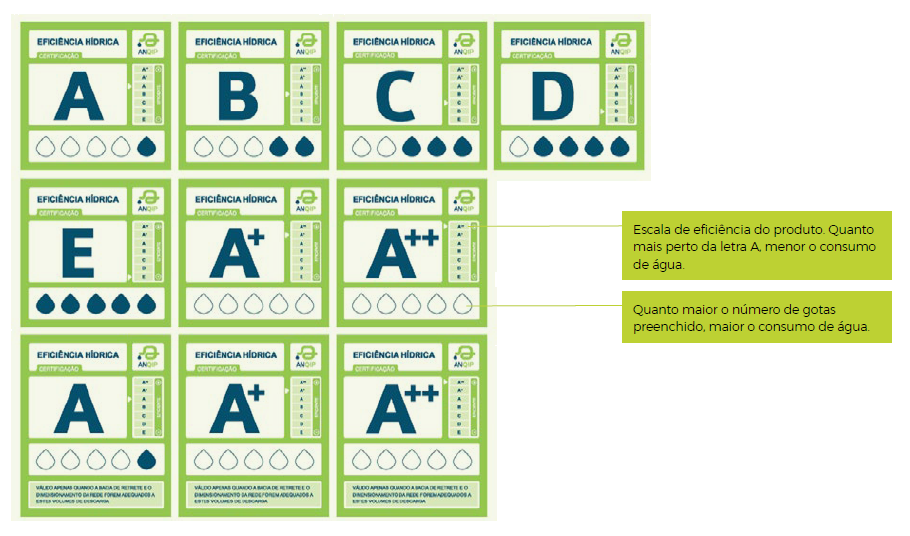
Water Efficiency Labels adopted in Portugal – ANQIP label
(Source: e-Book Aqua eXperience, 2018)
In flushing systems – there are more efficient mechanisms and others that support an adequacy of the discharge volume, for example in relation to use (double discharge or interrupted discharge, with option to stop by the user). In general, the efficient cisterns have between 4 and 5 liters of total volume (corresponding to A, A + or A ++ according to the example in Figure 3);
Kitchen and bathroom taps can represent around 16% of consumption in the residential sector in Portugal. For washbasin taps, the typical model considered (corresponding to the letter A), is one that consumes water up to 2 liters per minute. For kitchen taps, the typical model considered (corresponding to the letter A) is one that consumes water up to 4 liters per minute.
To minimize water consumption and comfort, without replacing devices, there are also flow reducers, which reduce the volume of water consumed in each use.
Choose dishwashers and clothes that are more water-efficient. See the energy label, which also identifies water consumption.
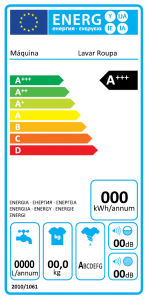
Washing machines energy label
(Source: Manual da Etiqueta Energética of ADENE, 2017)
The most efficient appliances can generate savings of up to 51% (washing machines) and 41% (in the case of dishwashers) in water consumption.
When choosing, you should always look for the most energy efficient equipment (energy classes from A to A +++).
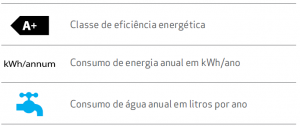
Washing machines energy label
(Source: Manual da Etiqueta Energética of ADENE, 2017)
To reduce water consumption, in addition to the energy class, you should look for machines whose label indicates an average annual water consumption of less than 10,000 liters (L / year) for washing machines and 2,500 L / year for dishwashers.
These and other solutions and suggestions can be found in the Aqua eXperience e-Book
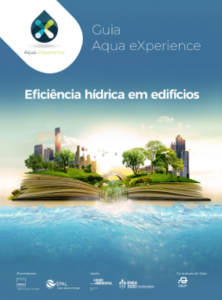
Aqua eXperience is an education, awareness and mobilization project for water efficiency and the water-energy nexus, which aims to contribute to changing the behavior of water consumers in the urban sector, particularly in residential buildings.
The project is developed by ADENE and EPAL and supported by the Environmental Fund of the Ministry of Environment, within the framework of the National Strategy for Environmental Education 2020.
Aqua eXperience explains the “why” of water efficiency and also the “how”, through gamification aimed at young people, in the Aqua eXperience e-Book, aimed at residential consumers, from the Aqua Community and Aqua Solutions.
[1] INE, 2017; [2] ADENE, 2016; [3] Silva-Afonso, Pimentel-Rodrigues, 2011



 Simulador Simples
Simulador Simples Simulador Avançado
Simulador Avançado